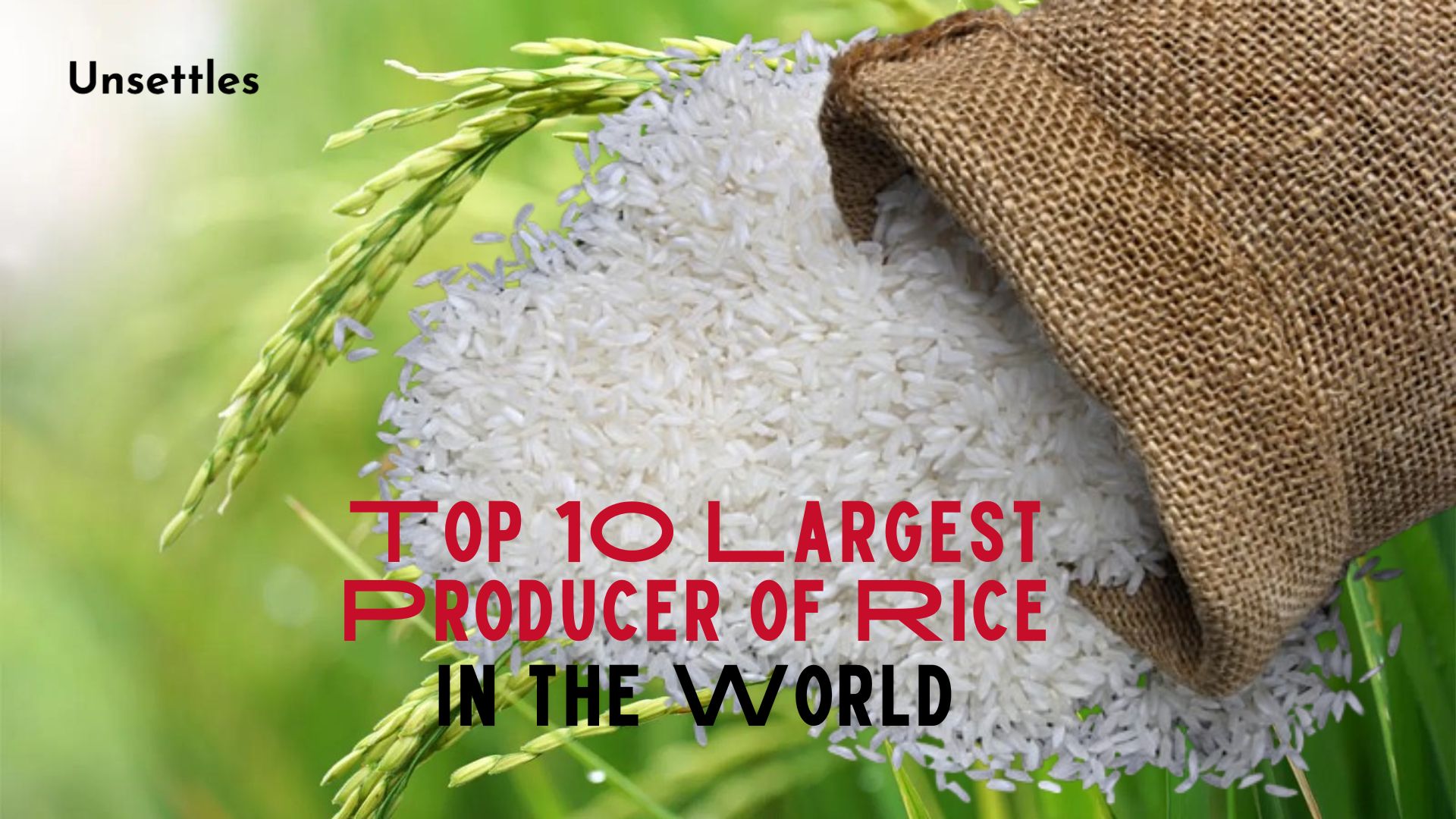Rice is one of the most widely consumed staple foods globally, playing a central role in daily diets and offering cultural significance across many regions. The immense demand for rice has led to its widespread cultivation, with paddy farming being a key agricultural practice in numerous countries. Interestingly, the vast majority of rice production—around 90%—is concentrated in Asia. In this article, we will explore the top 10 largest rice-producing countries in the world and their contributions to global agriculture.
Top Rice-Producing Countries in the World
1. China:
The Leader in Rice Production (149,000,000 MT)
China sits at the top as the world’s largest rice producer, yielding an impressive 149 million metric tons annually. The country’s vast agricultural land and diverse climate zones allow it to meet the enormous demands of its population. China’s success in rice production is bolstered by modern farming technologies and innovations. The government aims to maintain this leadership, with plans to produce the same high yield in the 2023-2024 period. From the Yangtze River to the Yunnan-Guizhou plateau, rice remains an integral part of China’s agricultural and cultural heritage.
2. India:
A Powerhouse in Rice Cultivation (132,000,000 MT)
India ranks second, producing 132 million metric tons of rice. With its wide-ranging climatic conditions and fertile lands, rice is deeply embedded in India’s agricultural landscape. India not only meets domestic needs but also plays a major role in the global rice export market. Rice farming in India involves traditional techniques, making it a labor-intensive yet vital sector for the country’s economy. The forecast for 2023-2024 suggests that production may climb even higher, reaching 134 million metric tons.
3. Bangladesh:
A Steadfast Rice Producer (36,400,000 MT)
Despite being smaller in size compared to China and India, Bangladesh ranks as the third-largest rice producer, yielding 36.4 million metric tons annually. The country’s ability to adopt innovative agricultural techniques has allowed it to become a major player in the global rice market. With rice farming covering 75% of its agricultural land, Bangladesh continues to strengthen its rice production capabilities, with projections estimating 37 million metric tons in the coming years.
4. Indonesia:
An Archipelago of Rice (34,450,000 MT)
Indonesia produces 34.45 million metric tons of rice annually, making it the fourth-largest rice producer globally. The country’s diverse climates and vast paddy fields create ideal conditions for rice cultivation. Government support and improved agricultural practices have helped Indonesia sustain high levels of rice production. Rice continues to be a dietary staple for the population, contributing nearly half of the daily calorie intake for Indonesians.
5. Vietnam:
Southeast Asia’s Rice Giant (27,000,000 MT)
Vietnam, often referred to as the “Rice Bowl of Southeast Asia,” produces 27 million metric tons of rice each year. Rice cultivation in Vietnam is centered around the fertile Mekong Delta, where advancements in farming techniques have greatly boosted output. Vietnam is not only a major rice consumer but also one of the largest rice exporters in the world. Its rice is known for its quality and is highly sought after on the global market.
6. Thailand:
Home of Fragrant Rice (19,500,000 MT)
Thailand is renowned for its fragrant and high-quality rice varieties, producing 19.5 million metric tons annually. Known for Jasmine rice, Thailand’s agriculture sector has made significant strides in research and development to enhance rice production. Rice plays a crucial role in Thailand’s economy, with millions of farmers relying on its cultivation for their livelihoods. Despite challenges such as climate change, Thailand’s rice production remains strong and steady.
7. Philippines:
A Rice-Producing Tropical Paradise (12,600,000 MT)
The Philippines produces 12.6 million metric tons of rice, making it a key player in the global rice market. Despite facing frequent typhoons and unpredictable weather, the Philippines has embraced sustainable farming practices to ensure stable rice production. The country’s focus on expanding irrigation and improving farming techniques has been instrumental in maintaining high levels of output.
8. Myanmar (Burma):
Tapping Agricultural Potential (12,000,000 MT)
Myanmar, with its rich agricultural potential, produces 12 million metric tons of rice annually. The country’s vast arable land and favorable climate have allowed it to increase rice production over the years. As Myanmar continues to modernize its agricultural sector, it is expected to further boost rice output, positioning itself as a significant player in global rice exports.
9. Pakistan:
Overcoming Challenges in Rice Production (9,000,000 MT)
Pakistan is the ninth-largest rice producer in the world, yielding 9 million metric tons each year. Despite facing challenges like water scarcity, Pakistan has managed to sustain its rice production through agricultural research and innovation. The country’s rice industry is vital not only for domestic consumption but also for exports, contributing significantly to the national economy.
10. Brazil:
A Blend of Tradition and Innovation (7,370,000 MT)
Brazil stands out as the largest rice producer outside of Asia, with an annual output of 7.37 million metric tons. Rice is grown mainly in the southern regions of Santa Catarina and Rio Grande do Sul, where the climate is well-suited for high yields. While Brazil is known for its production of other crops, rice remains an important agricultural product, and the country continues to improve its farming practices through technological advancements.
Conclusion
These top rice-producing countries have not only mastered the art of cultivation but have also made significant advancements in agricultural techniques to meet the growing global demand for rice. Each country plays a vital role in ensuring food security and contributes to the diversity of rice varieties available worldwide. Over the last decade, these nations have consistently pushed the boundaries of rice production, ensuring both quantity and quality to feed the world’s population.
